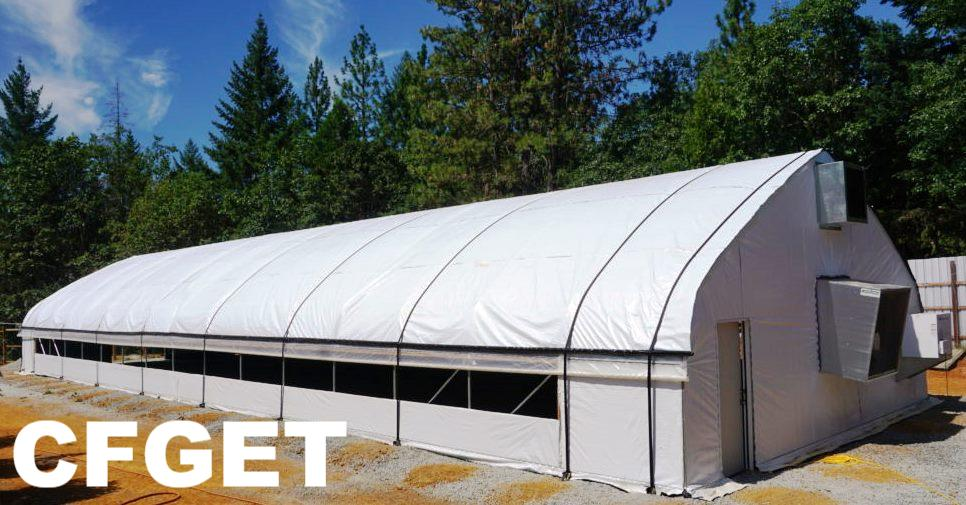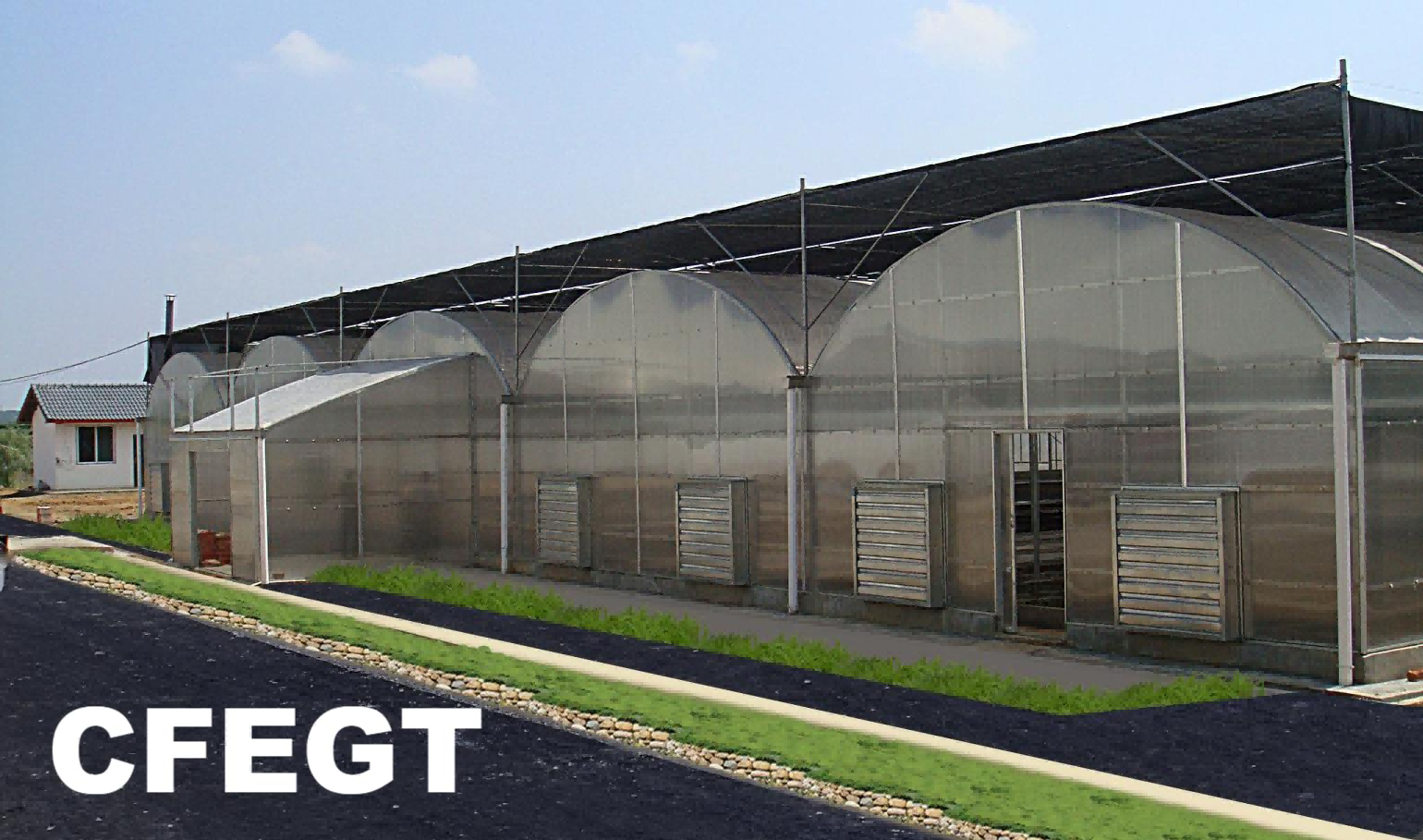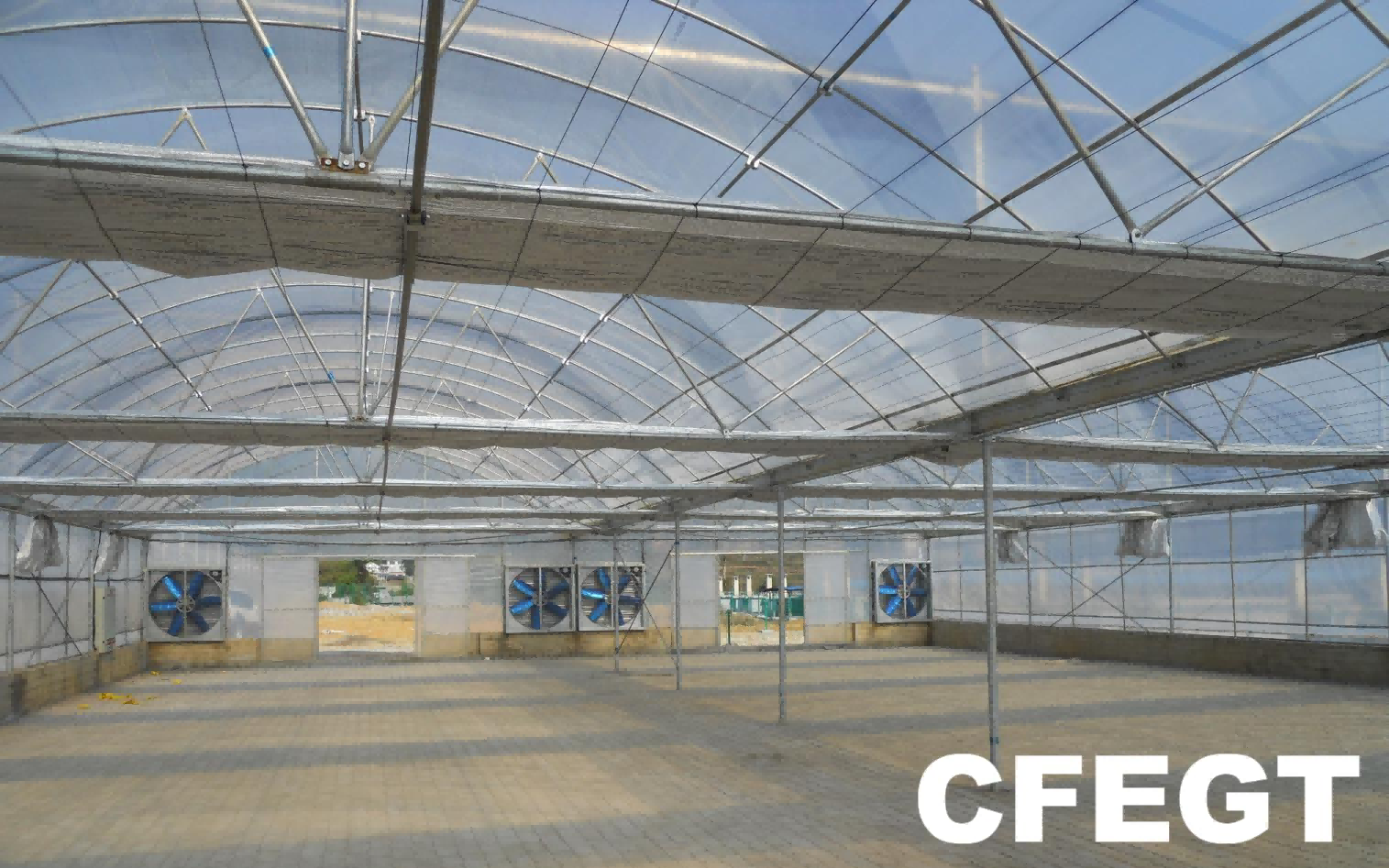With advances in agricultural technology, greenhouse cultivation has become an ideal choice for many crops, especially mushrooms, which have highly specific environmental needs. Mushrooms, as a popular edible fungus, require precise conditions such as temperature, humidity, and light for optimal growth. Greenhouses offer a controlled environment, allowing for efficient year-round production. Additionally, selecting the right type of greenhouse is crucial as it significantly impacts both growing results and economic efficiency. Follow Chengfei Greenhouse to explores the key advantages of greenhouse mushroom cultivation.
Advantages of Greenhouse Mushroom Cultivation
*Environmental Control: Precise Adjustment of Temperature and Humidity
Mushroom growth is highly dependent on environmental factors, with temperature and humidity being the most critical. The optimal growing temperature for most mushrooms is between 12-24°C, although different varieties have specific needs. For example, shiitake mushrooms grow best between 18-22°C, while enoki mushrooms prefer cooler temperatures, around 10-15°C. Additionally, mushrooms require humidity levels of 80%-95%.
One of the main benefits of greenhouse cultivation is the ability to precisely control these environmental conditions. Through automated temperature and humidity control systems, growers can ensure that the greenhouse remains within the ideal range for mushroom growth. Modern greenhouse technology enables real-time monitoring of temperature and humidity changes and can adjust them automatically, providing a stable growing environment. This level of control not only increases yield but also reduces losses caused by environmental fluctuations.
For instance, during winter, when outdoor temperatures are low, a greenhouse heating system can easily maintain the required temperature, preventing cold weather from affecting mushroom growth. Conversely, in summer, cooling systems help prevent excessive heat from drying out or damaging mushrooms. Humidity control is equally important, and the use of misting or steam humidification equipment ensures that the air remains moist, allowing mushrooms to thrive in the right conditions.
*Pest and Disease Control: Reducing External Interference
Mushrooms are highly susceptible to pests and diseases, particularly molds and nematodes, which can cause significant damage. The enclosed environment of a greenhouse minimizes the risk of outside contamination, allowing growers to better manage internal conditions.By using air filtration and disinfection systems, greenhouses can block external pathogens, reducing the risk of infection. Moreover, the sealed environment limits the need for chemical pesticides, enhancing the safety of the mushrooms and aligning with consumer demands for healthier food options. Biological control techniques, such as introducing beneficial microbes to inhibit harmful pathogens, can also be implemented to strengthen mushroom resistance.
*Year-Round Cultivation: Overcoming Seasonal Limits
Traditional open field mushroom farming is often constrained by climate and season, with cultivation limited to favorable growing periods. Greenhouse farming eliminates this restriction, allowing for year-round production by controlling the environment. For mushroom products with steady and growing market demand, maintaining a continuous supply is a significant commercial advantage.
*Increased Efficiency: High-Density Cultivation and Automation
Greenhouses also enable high-density mushroom cultivation, maximizing output in limited space. With modern techniques such as vertical farming and soilless cultivation, space utilization within the greenhouse is greatly enhanced. Moreover, intelligent environmental control systems allow for the integration of automated equipment, improving management efficiency.Automated systems for irrigation, misting, and ventilation reduce the need for manual labor, lowering operational costs and streamlining the production process.
*Higher Quality Standards
Greenhouse farming provides a highly controlled environment, allowing mushrooms to develop with greater consistency in appearance, taste, and nutritional value. Compared to outdoor cultivation, greenhouse-grown mushrooms are less affected by environmental fluctuations, leading to more uniform maturation and higher quality products. This not only improves market prices but also helps establish a strong brand reputation, bringing long-term economic benefits to growers.
Types of Greenhouses for Mushroom Cultivation and Their Features
Choosing the right type of greenhouse is crucial for successful mushroom farming. Different greenhouse structures offer varying advantages in insulation, ventilation, and light control. Growers should consider factors such as location, climate, and budget when selecting a greenhouse.
*Light-Blocking Greenhouses: Ideal for Mushroom Farming
Since most mushrooms do not require sunlight during their growth, and some varieties may even suffer from exposure to strong light, light-blocking greenhouses are a perfect choice. These greenhouses use shading materials to cover the roof and sides, effectively blocking most external light, ensuring that the interior conditions meet the mushrooms' needs.
The design of light-blocking greenhouses often emphasizes air circulation and humidity control. A good ventilation system regulates carbon dioxide levels inside the greenhouse, promoting the respiratory processes of mushrooms. At the same time, humidity is maintained through misting systems, creating a consistently moist environment ideal for mushroom growth.

*PC Panel Greenhouses: Excellent Insulation and Structural Strength
PC (polycarbonate) panel greenhouses are another excellent option for mushroom cultivation due to their superior insulation and impact resistance. Although PC panels have good transparency, shading nets or blackout films can be added to the exterior to meet the light-blocking needs of mushrooms. The thermal stability and insulation of PC panels are particularly beneficial in cold or extreme weather, providing adequate warmth during the winter months.
PC panel greenhouses also offer strong structural integrity, capable of withstanding heavy snow and wind loads, making them suitable for regions with unpredictable climates. For large-scale mushroom farming, PC panel greenhouses offer ample space for vertical cultivation and equipment installation.

*Film Greenhouses: A Cost-Effective Option
For growers with limited initial investment, film greenhouses are an economical choice. These structures are covered with plastic films, which are relatively low-cost and easy to assemble. While film greenhouses may not offer the same level of insulation as PC panel greenhouses, they can still provide adequate warmth with multiple layers of covering or special thermal films.
The primary advantage of film greenhouses lies in their low construction cost, making them suitable for small- to medium-scale growers or those looking to expand quickly. Although they have a shorter lifespan compared to more durable materials, with proper maintenance, film greenhouses can still provide efficient production spaces for mushrooms.

Greenhouse mushroom cultivation not only offers a stable, controlled environment but also enhances production efficiency and product quality through precise environmental control and the selection of suitable greenhouse structures. Whether you choose a light-blocking, PC panel, or film greenhouse, each type can be customized to meet the specific needs of mushroom growers. Through scientific management, greenhouse cultivation can break the limitations of traditional farming and deliver substantial economic benefits. As agriculture continues to evolve, greenhouse mushroom farming will undoubtedly become a key method for achieving efficient, sustainable growth.
Email: info@cfgreenhouse.com
Phone: (0086) 13550100793
Post time: Oct-15-2024







 Click to Chat
Click to Chat